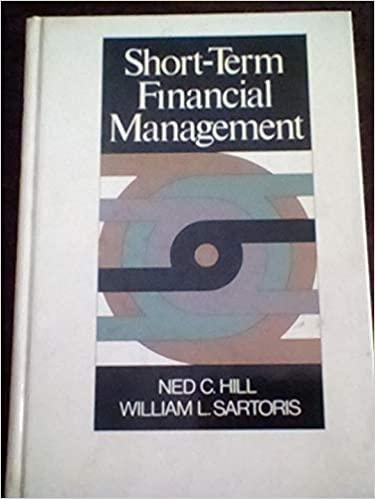Question
Based on the material in the course and other research which you conduct, answer the questions shown below after the data on Jones Company. If
Based on the material in the course and other research which you conduct, answer the questions shown below after the data on Jones Company. If you use additional sources of information from outside the course, be sure to identify those sources. BE SURE TO SHOW ALL OF YOUR CALCULATIONS.
Jones Company is a U.S. firm preparing its financial plan for the next year. It has no foreign subsidiaries, but more than half of its sales are from exports to Australia, Canada, Argentina and Taiwan. Its estimated foreign cash inflows to be received from exports and cash outflows to be paid for imports over the next year are shown below:
Currency Total Inflow Total Outflow Australia dollars (A$) A$33,000,000 A$3,000,000 Canada dollars (C$) C$6,000,000 C$2,000,000 Argentina pesos (AP) AP12,000,000 AP11,000,000 Taiwan dollars (T$) T$5,000,000 T$9,000,000
The spot rates and one-year forward rates as of today are:
Currency Spot Rate One-Year Forward Rate A$ $ .91 $ .94 C$ .61 .60 AP .19 .16 T$ .66 .65
1. Based on the information provided, calculate the net foreign exchange exposure Jones faces for each foreign currency stated in dollars.
2. The current spot rate is used by Jones as a forecast of the future spot rate one year into the future. The C$, AP, and T$ are expected to move in tandem against the U.S. dollar over the next year. The A$s movements are expected to be unrelated to movements of the other currencies. As exchange rates are difficult to predict, the forecasted net dollar cash flows per currency may be inaccurate. Could there be offsetting exchange rate movements from whatever exchange rate movements do occur? Explain.
3. Given the forecast of the A$ along with the forward rate of the A$, what is the expected increase or decrease in US$ cash flows which would result from hedging the net cash flows in A$? Would you hedge the A$ position?
4. Assume that the A$ net inflows may range from A$20,000,000 to A$40,000,000 over the next year. Explain the risk of hedging A$30,000,000 in net inflows. How can Jones avoid such a risk? Is there any tradeoff resulting from your strategy to avoid that risk?
5. Jones recognizes that its year-to-year hedging strategy hedges the risk only over a given year, and does not insulate it from long-term trends in the A$s value. It has considered establishing a subsidiary in Australia. The goods would be sent from the U.S. to the Australian subsidiary and distributed by the subsidiary. The proceeds received would be reinvested by the Australian subsidiary in that country. As a result of implementing this strategy, Jones would not have to convert A$ to US$ each year. Has Jones eliminated its exposure to exchange rate risk by using this strategy? What other exchange related exposure might result from this strategy. Explain.
6. Discuss the alternatives that Jones has in hedging its net positions in each currency. Which one would you choose for each currency based on the information shown and additional research you conduct.
Step by Step Solution
There are 3 Steps involved in it
Step: 1

Get Instant Access to Expert-Tailored Solutions
See step-by-step solutions with expert insights and AI powered tools for academic success
Step: 2

Step: 3

Ace Your Homework with AI
Get the answers you need in no time with our AI-driven, step-by-step assistance
Get Started


